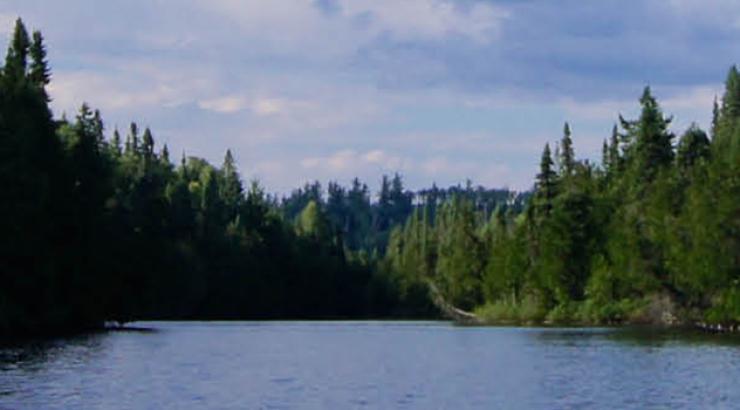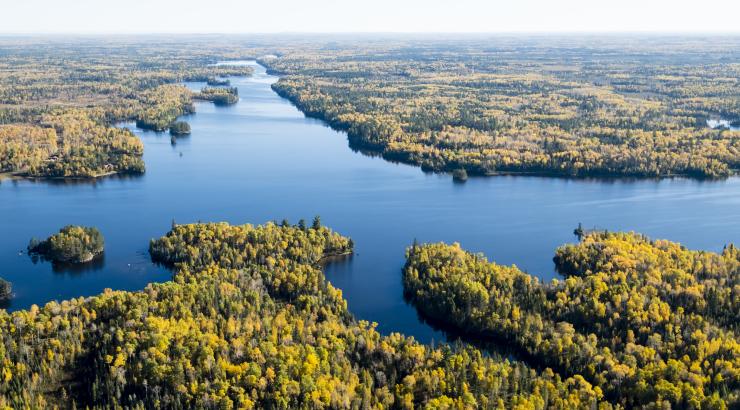![]() The American Angler article "Risk vs. Reward," written by Morgan Lyle, originally ran in the January/February 2016 issue of American Angler and is reprinted here with permission. The following is an excerpt. You can read the full article as a PDF.
The American Angler article "Risk vs. Reward," written by Morgan Lyle, originally ran in the January/February 2016 issue of American Angler and is reprinted here with permission. The following is an excerpt. You can read the full article as a PDF.
More than one million acres of water and woods, one hundred fifty miles long with thousands of lakes, and streams full of smallmouth bass and northern pike. Protected since 1926, made part of the National Wilderness Preservation System in 1964, and today the nation's most-visited wilderness area.
And now, possibly, a next-door neighbor to huge copper and nickel mines which, opponents say, are all but guaranteed to wreak environmental havoc.
The Boundary Waters Canoe Area Wilderness (BWCA) in northeastern Minnesota sits adjacent to a massive deposit of precious minerals of the kind Americans consume voraciously. Four mining companies, including a Chilean mining company called Twin Metals, owned by Antofogasta, want to dig large mines there that will produce 50,000 tons of mineralized ore per day for 30 years. This type of mining has never been done before in Minnesota.
Compounding the issue is the fact sulfide-bearing ore produces sulfuric acid when in contact with water or snow, and leaches toxic heavy metals and sulfates. In the history of mining, there's never been an open-pit or underground mine that hasn't generated this catastrophic brew, and there's no new technology, nor has there ever been technology, to make the mixture safe.
The quality of material from the proposed mines is also considered "low grade;” with less than one-percent of the ore containing copper. The remainder is simply waste Twin Metals says it plans to either pipe out or stock in tailings (with no lining).
Neither are benign treatments. The tailings will leach for centuries into the ground water that eventually reaches the Boundary Waters watershed. There's nothing a mining company can do to control that.
But some mining jobs pay more than $80,000 per year, and mined elements produce materials vital to everything from cell phones to catalytic converters to wind turbines.
"People try to justify all this by saying, 'Well, we need the jobs,' and yeah, it will bring jobs-well paying jobs; but only for engineers and the like, not for local kids. There aren't many positions, they don't last for very long, and they can actually displace many more jobs," Campaign to Save the Boundary Waters Campaign Chair Rebecca Rom said. "Communities that turn to mining because of jobs actually suffer from persistent poverty because of the environmental degradation and the undesirability of the place. Is this all worth risking our wilderness and national forests? Remember, the ramifications aren't just affecting those in northern Minnesota. As U.S. residents, we all have an ownership stake in these areas.”
"If you want the mine, you have to say 'I accept the risks of leaks and seeps. I accept the loss of our forest land where we hunt, fish, and hike.' I can't do that," Rom says. "We're asking the forest service and the BLM to withdraw the federally-owned minerals from the leasing program. The Secretary of the Interior has the authority to decide which lands are 'in' and 'out' of the program. It's an accepted practice, and it can happen."
“The BWCA has some of the highest water quality anywhere,” said Jason Zabokrtsky [owner of Ely Outfitting Company, a canoe trip outfitter]. “It’s the very top of a watershed flowing north to Hudson Bay. These are pristine drinking water lakes, where you can dip your cup right over the side of the boat and take a sit. They also are extremely good fishing waters. If you like a world-class fishery and you like clean water, you don’t want these types of mines to be there. It’s just a really risky place to put this type of mining.”


